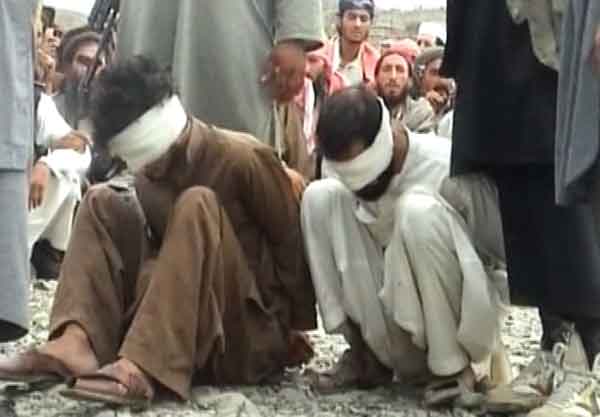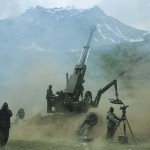A negotiated political settlement with the Taliban would be a desirable prerequisite to ending the prevailing conflict in Afghanistan, but current talks with the Taliban are unlikely to result in sustainable peace. All such efforts stand little chance of success in the face of an internal crisis of governance, deep-rooted political divisions, deteriorating security and widely differing interests and priorities of influential outside actors. While U.S. and NATO allies would, at very best, want the framework of a political settlement with all or most of the three main insurgent groups, including the Taliban, in place well before their planned withdrawal of combat forces, Pakistan, the immediate neighbour, is ensuring that such efforts are scuttled.
Political, ethnic and tribal divisions among Afghans have militated against bringing peace, stability and security to Afghanistan.
Pakistan’s politically dominant military seems confident that its Afghan processes are on the way to victory. It perceives a politically weak Afghanistan as its best insurance against external incursions. India, in conjunction with several countries with a stake in the region, fears that a U.S.-NATO drawdown will precipitate a destabilising return of the Taliban or, perhaps even more troubling, result in Afghanistan’s next civil war.
To be fair, Afghanistan has definitely made considerable progress in last ten years, since the ouster of the Taliban regime. Imperfections notwithstanding, institutions of state have been put in place and attempts made to revitalise them, thus restoring a modicum of stability in the country. While there is a need to further consolidate these gains and keep Afghanistan on an upward development trajectory, there is substantial reason to believe that these gains could be temporary if Taliban and Islamic radicals regain a dominant political position in Kabul and provinces. To this end, the global as well as regional countries have an obligation to ensure that investments made so far in Afghanistan, both in terms of financial and human capital, by every stakeholder involved are saved from being wasted and Afghanistan remains a state standing after 2014 with sufficient capacity to contain insurgent threats and is not further exploited as a base for terror.
Political Process
An independent, sovereign, pluralistic and viable Afghanistan that does not provide shelter to any terrorist groups remains the cherished objective of the international community. However, the strategic shift in the U.S. position from the one taken earlier in 2001 is increasingly leading countries around the globe to think more in terms of what is achievable rather than what is desirable in Afghanistan, viewed especially against the backdrop of the 2014 deadline. A few important facets are as follow:
- The next presidential elections results must happen in a peaceful transfer of power. These may have to be preponed to ensure availability of sufficient number of U.S. and NATO troops. Any attempt to extend Karzai’s term would trigger an irreversible constitutional crisis and widen the appeal of armed resistance. The Afghan parliament must also amend the constitution and define in detail the parameters of presidential authority, from the opening of the campaign to the certification of polling results. Electoral reforms must also be undertaken within the coming year to prevent another clash over the authority of an independent election commission as also to guarantee maximum participation in the polling process.
- Constitutional reform is essential to build support for a sustainable settlement. The current political system is fundamentally out of step with the diverse nature of Afghan society. It is at odds with the need to reconcile improved governance with local self-determination and broad access to the levers of power and justice. Imbalances amongst the executive, the legislation and the judiciary along with the need for the devolution of power from Kabul to provinces need to be addressed. Changes of this sort cannot be addressed through the medium of a half-hearted effort. They would require diligent work by the parliament.
…that the U.S. will retain a significant military presence in Afghanistan after 2014 to help Kabul defend itself against its adversaries.
Political Settlement
There is no military solution envisaged to the conflict in Afghanistan, only a political one. Forced (albeit lured) reconciliation is unlikely to result in sustainable peace. Reconciliation, even though it offers an ideal solution, remains a nonstarter, with most Afghan protagonists viewing it with suspicion or a ploy to hand over the reins of power to the Taliban. The prospects of this process do not look good, particularly after the Rabbani assassination. Efforts by the Afghan government have been ill conceived and haphazard. Amid fundamental disagreements over the meaning of reconciliation, the government appears focused on political accommodation with a variety of unsavoury powerbrokers. The rhetorical clamour over talks about talks have led to desperate and dangerous moves to lure purported leaders from the three main insurgent groups—the Talibans, Hizb-e-Islami and the Haqqani network—to the negotiating table. This state of confusion has started fears amongst ethnic minorities that the aim of Karzai’s reconciliation policy is primarily to share up this constituency among conservative Pashtun elites at the expense of hand-fought protection for Afghan citizens. U.S. attempts at talks have also not brought in any results. It is felt that a lasting peace accord will ultimately require far more structured negotiations under the aegis of the UN than are presently being pursued. The Security Council should mandate the Security General to appoint a small team of mutually agreeable mediators as soon as possible to ensure that critical stakeholders are fully consulted and remain engaged in the negotiation process.
Security Forces and Transition
In the initial year after 2001, the international community neglected the imperative of providing Afghanistan with a well-trained and well-equipped army and police. Over the last couple of years, this lacuna has started being addressed, and substantial results are now being directed into developing the Afghan National Security Forces (ANSF), building new facilities and investing in its education and training. While these efforts and investments appear to be yielding dividends, it remains a work in progress that is unlikely to be complete by the time of the 2014 deadline.
Here are some of the salient issues that merit attention:
- Shape and Composition of ANA: The regional dimensions as well as the lack of resources impose a serious limitation on the Afghan National Army’s (ANA’s) ability to respond to threat on its own at present or in the foreseeable future. It is unlikely, for example, that ANA would be able to confront the threat from terrorist safe terrains in Pakistan’s border areas without significant assistance from U.S. intelligence, surveillance and reconnaissance assets in the region. In addition, ANA just cannot afford a modern air force. U.S. and NATO forces would be required to provide air cover for quite some time to come.
- Manpower Policies: Recruitment and retention policies as well as attracting quality people who are suitable, committed and educated both in the ranks as well in officers cadre would continue to pose difficulties. Given the low levels of education facilities in Afghanistan, it is not surprising to find that approximately 70% of ANA is functionally illiterate. To mould it into an effective army would be a challenging task. There is also an essential imperative of having an ethnically diverse army. A rough estimate indicates that while the presence of the Pashtuns at all levels corresponds to their general proportion of the population, the Tajiks continue to dominate the officer and NCO ranks. In contrast, the Hazaras, the Uzbeks and other minorities are significantly underrepresented. These discrepancies fuel factionalism and deepen patronage politicsThe only country with disruptive intentions in Afghanistan is Pakistan.
The only country with disruptive intentions in Afghanistan is Pakistan.
- Logistics and Administration: The existing logistics systems are underdeveloped and less than efficient. Insufficient logistics and supply chains often hinder operational effectiveness. This serious lacuna must be immediately addressed. In their quest to have a modern army, the Afghan legislature and executive must be assisted in adopting a comprehensive body of law or decrees to define the army’s role as well as its administrative structure.
- Funding Requirements: The medium-term viability of the ANSF depends critically on funding being available beyond 2014. Undoubtedly, the Afghanistan government will not be in a position to fund the ANSF. Rough estimates come to 3–4 billion dollars a year. This amount would be insignificant compared to the savings that would accrue especially to the United States after the drawdown of their forces. NATO would also have significant savings with the withdrawal of their combatants from Afghanistan in 2014. There should, therefore, be an agreement drawn for an annual grant for ANA for at least 10 years, to be reviewed at the end of this period. India is expected to contribute in a major way by training and equipping the ANSF as outlined in its agreement with Afghanistan.
- Afghanistan’s Security Structure: There is an immediate need to create/strengthen as well as institutionalise a cohesive security structure that should evolve policies regarding important questions such as the ultimate force size, equipment and infrastructure expenditure. At the moment, such vital decisions are being taken mostly on an ad hoc basis. There is a requirement to further prepare the Afghanistan government’s Office of National Security Council (ONSC) as a lead coordinating body in charge of prioritising security sector policies and expenditure.
The Afghan security forces are going to continue to significantly depend on U.S. and international assistance for foreseeable future. There is a requirement to revamp the current organisation called Combined Security Command-Afghanistan (CSTC-A), led by the United States, which looks after the funding, expansion and development programme for the ANSF. While retaining its character and role, the US and NATO countries may consider converting this body into and an international military/security assistance commission for Afghanistan or create any other suitable international mechanism with representation from all major donors to oversee financing, equipping and training of ANA and the Afghanistan National Police (ANP). The objective would be to oversee the evolution of the ANSF into a more professional, trained and equipped force for at least next 10 to 15 years. This must, however, be done with the explicit concurrence of the Afghan government. In addition to this, an international security presence will be a sine qua non to help in the transition process. Alongside, stronger international instrumentalities need to be put in place to penalise any sponsorship of terrorism by any country and to evolve meaningful mechanisms to curb the spread of small arms and explosives and the movement of funds.





